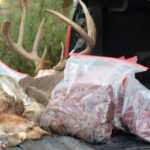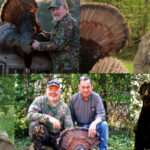When it comes to the use of dogs for finding shed deer antlers, few guys are invested in the game like Jeremy Moore of DogBone. Moore has committed his career to the training and education for hunting dogs and their owners. Shed dogs, tracking dogs, and gun dogs are his business. He knows what it takes to train these dogs and maximize their potential in the field.
I reached out to Moore to dig in a little deeper on what it takes to turn your dog into a shed dog. We’re not talking about raising a shed dog from a pup. We’re talking about teaching an old dog new tricks. Here’s a look at how to turn your house dog, regardless of the breed, into a shed dog in the days ahead.
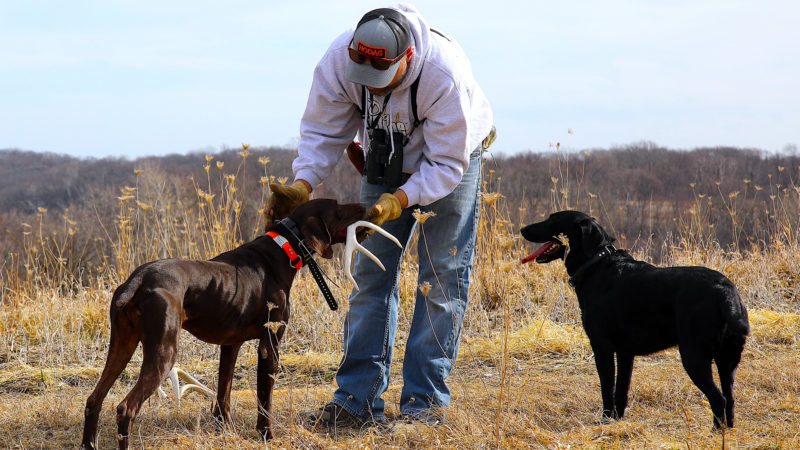
Build On Your Dog's Foundation
Turning your grown dog into a shed hunting dog comes down to the basics of its foundation. Does he or she have the basics in place? “All of our training is built on the dogs foundation,” says Moore. “Specific drills that develop the things a dog needs to effectively hunt, find, and retrieve antlers, require a baseline of obedience and control. Without it, you can’t successfully complete a drill and develop those skills.”
Moore says that an older dog might give you an advantage of progressing quicker in the training process. However, you might be at a disadvantage if there are “holes” in the dogs training that you will have to go back and fill in. “Those holes in a dog’s training always show up at the wrong time,” says Moore.
The bottom line – build on your dog’s foundation for training and honing what it needs for success.
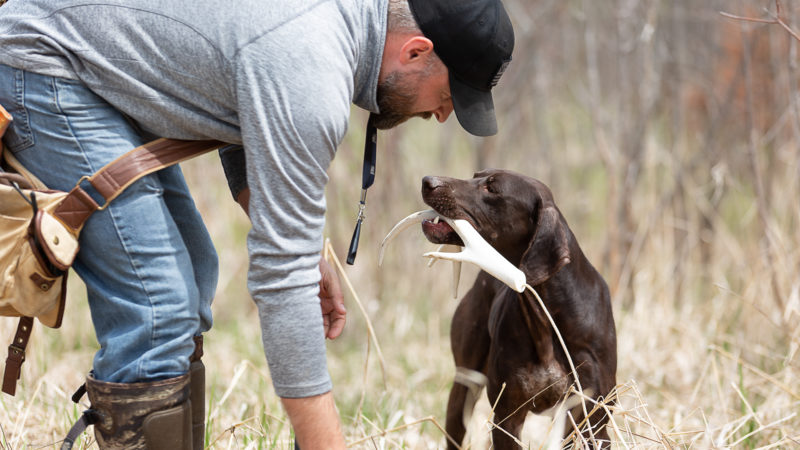
Tap Into Your Dog's Strengths
Much like building on a dog’s foundation, Moore also stresses the need to tap into your dog’s strengths.
“Retrievers retrieve – it’s their last name,” says Moore. “My retrievers don’t retrieve things because they like the ‘thing’ (ducks, pheasants, grouse, sheds, balls, etc.) It’s not the object itself they like. They retrieve them because they like to retrieve. I train them that certain objects equal that retrieve. They’d retrieve a stick if I threw it for them, despite the fact that they are not bred to be a stick dog.”
Don't Overcomplicate Things
Moore cautions dog owners from overcomplicating things in the training process. Keep it simple. “I think there are 2 things that are important for a dog to understand when it comes to shed hunting,” says Moore.
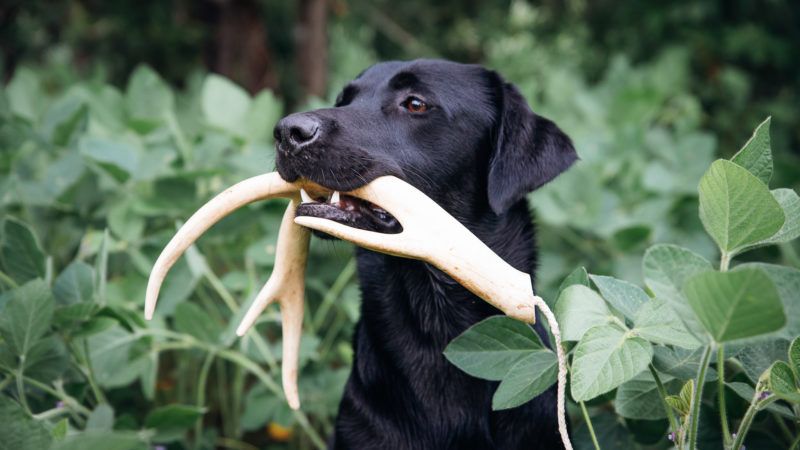
These are the basics a dog must learn as the foundational elements in the process. Second, Moore stresses the importance of your dog’s understanding of antlers. “The antler is going to have a shape and feel that the dog has to be okay with taking on,” says Moore.
“Bigger antlers are going to present challenges at times (elk, moose, etc.), while smaller antlers will have their own unique challenges by being much harder to see. Keep in mind, antlers are hard and sharp at times, and well-bred retrievers have been built for centuries to have what is know as a, ‘soft mouth.’ It can be intimidating and take some time to build up the confidence for a soft-mouthed dog to pick up hard and heavy things.”
Take Advantage of the Season
As with most any discipline, experience is often the best teacher. That’s exactly what you’ll find with training a dog. They need time in the game to learn the skills. That’s why it’s so important to take advantage of the season and the opportunities it holds.
“Shed season in the spring is like hunting season in the fall,” says Moore. “It comes and goes way too fast. In a season or two, it’s realistic to expose bird dogs to a lot of opportunities working birds. That is the best way to develop a bird dog.”
“Unfortunately, that’s not always the case with shed hunting. Not everyone has the situations available to them to find a lot of sheds in a season. The value of each one of those sheds is immeasurable.”
Moore also mentions that you have to be patient and understand that those are the opportunities your dog has to put all the pieces together. “It’s no different than training a bird dog,” says Moore.
“It takes a lot of opportunities to get them where you want in the end. Contrary to gun dogs and bird dogs, there is little risk in taking a shed dog “too early” provided you have realistic expectations and understand the importance of patience. Training a dog is not a sprint, it’s a marathon.”
If you’ve got a solid dog that you’ve considered training to find sheds, why not give it a shot this season? Just be sure to keep the factors mentioned above in mind as you get started.
For more information on training your dog for sheds, tracking, or bird hunting, be sure to check out Moore’s website, www.dogbonehunter.com.

 By
By 
